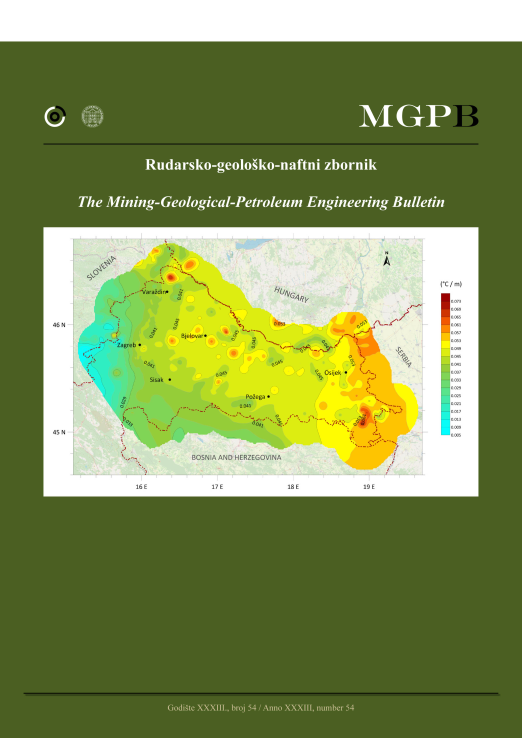Aquifer Characterization and Physiochemical Analysis of District Dera Ghazi Khan Punjab, Pakistan
DOI:
https://doi.org/10.17794/rgn.2021.3.4Keywords:
Alluvial deposits, Salinity; Aquifer, Physio-chemical, Heavy metalsAbstract
The study area is located in the arid section of Punjab province, Pakistan. The accessibility of freshwater is the main problem in this area. The area is mainly flat and alluvial deposits are present down to 800 m. The groundwater is not fit for drinking because of its salinity. Hence, it is essential to mark the transition between fresh water and saltwater. Resistivity models were used to locate freshwater areas. The saltwater areas are between 10 and 30 m deep. Salt flats and clayrich deposits are visible on resistivity maps and were identified by low resistance values. After linking resistivity data and maps, it is determined that the south portion of the area has a freshwater aquifer, especially at a depth of 200 m. At this depth, the quality of water is very good, regardless of its mild salinity in some areas. The margin between salty and freshwater is set to no degree. This is dependent upon the recharge and usage of an aquifer. Groundwater pollution poses a severe threat to the city’s residents. Results from the physio-chemical analysis of the water samples confirm the presence of arsenic in excessive amounts in water samples and are outside the limits set by the WHO and NDWQS. Just two out of 10 samples are within the limits for safe drinking water. The results of this research are valued for groundwater management and the installation of tubular wells in freshwater areas for households and irrigation purposes.
Downloads
Published
Issue
Section
License
Copyright (c) 2021 authors and journal

This work is licensed under a Creative Commons Attribution 4.0 International License.
Creative Commons-BY
Authors who publish with this journal agree to the following terms:
In agreeing this form, you certify that:
- You read the ethical codex of the RGN zbornik available at journal web.
- You submitted work is your original work, and has not previously been published and does not include any form of plagiarism.
- You own copyright in the submitted work, and are therefore permitted to assign the licence to publish to RGN zbornik.
- Your submitted work contains no violation of any existing copyright or other third party right or any material of an obscene, libellous or otherwise unlawful nature.
- You have obtained permission for and acknowledged the source of any illustrations, diagrams or other material included in the work of which you are not the copyright owner.
- You have taken due care to ensure the accuracy of the work, and that, to the best of your knowledge, there are no false statements made within it.
- All co-authors of this submitted work are aware of, and in agreement with, the terms of this licence and that the submitted manuscript has been approved by these authors.
Publication licence
You retain copyright in your submitted work, according to journal license policy (CC-BY). By signing this form you agree that RGN zbornik may publish it under the publication licence. In summary the licence allows the following:
Anyone is free:
- To copy, distribute, display, and perform the work.
- To make derivative works.
Under the following conditions:
- The original author must always be given credit.
- The work may not be used for commercial purposes.
- If the work is altered, transformed, or built upon, the resulting work may only be distributed under a licence identical to this one.
Exceptions to the licence
In addition to publishing the work printed under the above licence, RGN zbornik will also enable the work to be visible online.
The journal editorial can change the licence rules anytime but it cannot retroactively restrict author(s) rights.


